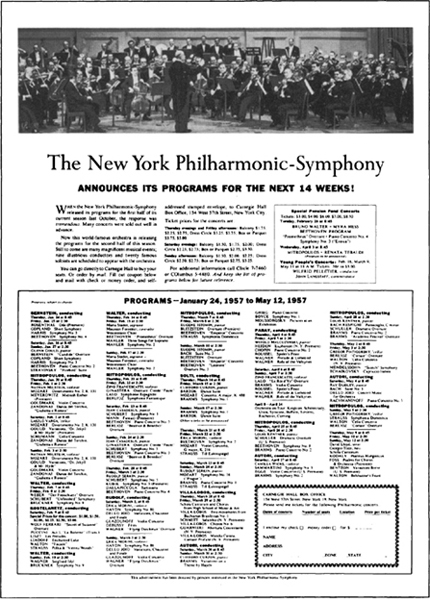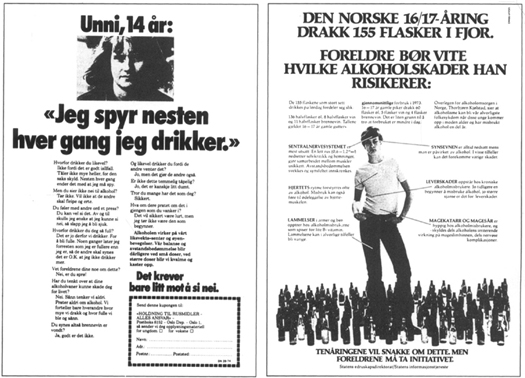13
Advertising for good causes
And raising money for charity
Forty years ago, the advertising establishment in the United States set up the Advertising Council to provide free campaigns for US Savings Bonds, the Red Cross and other good causes. In 1979, the media gave $600,000,000 worth of free time and space to the Council’s campaigns, and the agencies charged nothing for their services. In 1980, the Council’s campaign to encourage co-operation with the Census received $38,000,000 worth of free time and space.
This admirable system has one drawback: the success of each campaign depends on the generosity of the media, which cannot be predicted. The system in Britain is more controllable: the government provides the money.
World Wildlife Fund
During a period of five years, Ogilvy & Mather begged $6,500,000 worth of free advertising from media for the World Wildlife Fund – in 16 countries.
New York Philharmonic
In 1957 the New York Philharmonic was low in the water. The musicians were demoralized, playing to half-empty houses. My simple solution was to buy a page in the New York Times and publish the complete schedule for the coming season, in advance. Years later, someone who was in a position to know told me that this had done as much as Leonard Bernstein to put the Philharmonic back on its feet.
United Negro College Fund
A letter was distributed in commuter trains leaving Grand Central Station for the affluent suburbs. It began: ‘When this train emerges from the tunnel at 108th Street this evening, look out of the window’. What the commuters saw was the black slums of Harlem. In a single evening this letter produced contributions of $26,000 for the United Negro College Fund.
During a period of five years, Ogilvy & Mather begged $6,500,000 worth of free space for the World Wildlife Fund in 16 countries. The ads produced only modest contributions of cash in the mail, their function being to sensitize the public for more personal methods of fund-raising.
Click here for hi-res image.
Sierra Club
Howard Gossage, the most articulate rebel in the advertising business, held that advertising was too valuable an instrument to waste on commercial products. He believed that it justified its existence only when it was used for social purposes. One of his advertisements for the Sierra Club, opposing a hydroelectric project in Grand Canyon, pulled 3,000 applications for membership at $14 each.
To raise money for the United Negro College Fund, I had this letter put on every seat in the commuter trains leaving Grand Central Station for the affluent suburbs. It produced $26,000 in a single evening. The idea came from Bill Phillips, later Chairman of Ogilvy & Mather.
Click here for hi-res image.
In 1957 the New York Philharmonic was playing to half-empty houses. My simple solution was to buy space in the New York Times and publish the complete program for the coming season in advance. This worked.
Teenage alcoholism in Norway
In 1974 the Norwegian Government started an advertising campaign to reduce alcoholism among teenagers. The first advertisements were aimed at boys and girls between the ages of 14 and 16, with headlines such as ‘I vomit almost every time I drink’. Readership was the highest ever recorded in Norway. Later, the campaign was modified to address parents, explaining why children drink and the risks they run, with headlines like: ‘The average Norwegian 16/17-year-old drank 155 bottles of alcohol last year. Parents should know what damage their children are risking.’ More than 70 per cent of Norwegian parents read these advertisements, and the campaign triggered a massive discussion in the media. Drinking among teenagers decreased for the first time in many years.
In 1966, a group of Arizona Senators proposed a Bill which would have approved the flooding of part of the Grand Canyon for an unnecessary hydroelectric project. Howard Gossage’s agency in San Francisco ran a campaign for the conservationist Sierra Club who opposed it. His first ad pulled 3,000 applications for club membership – and the hydroelectric project was scrapped. Gossage believed that advertising justified its existence only when used for social purposes. The most articulate rebel in the advertising business, he said things like-this: ‘I love the advertising business. I truly do, although it’s no business of a grown man. I love it because it’s such a lovely Augean stable to clean up.’
Click here for hi-res image and text.
Cancer in India
In 1978 a survey in Bombay revealed that knowledge of the causes, symptoms and treatment of cancer was abysmally low. Then the Indian Cancer Society asked my Indian partners to mount an advertising campaign. The purpose of the campaign was to change attitudes from ignorance and fatalism to understanding and optimism. Only then could people be persuaded to have regular check-ups at the free clinics of the Society. The theme was one of hope: ‘Life after cancer … it’s worth living’. The advertisements showed real people who had been cured. Within two months, the number of check-ups given by the clinics tripled. (See this page.)
Two in a series of advertisements created by the Oslo office of Ogilvy & Mather on the subject of teenage alcoholism. Left The headline quotes a 14-year-old girl: ‘I vomit almost every time I drink.’ Readership was the highest ever recorded in Norway. Right The headline reads: ‘The Norwegian 16/17-year-old drank 155 bottles of alcohol last year. His parents should know the damage he risks.’ More than 70 per cent of Norwegian parents read these advertisements, and drinking among teenagers decreased for the first time in many years.
Raising money
Before you rush off to your favorite charity and volunteer to raise money by running advertisements, I must warn you that it is rare for any advertisement, however powerful, to bring in enough direct contributions to pay for the cost of the space.
What advertising can do, is to ‘sensitize’ the market, thus making it easier to raise money by more personal methods of solicitation. It is difficult to persuade people to give money to a charity unless they know something about it.




